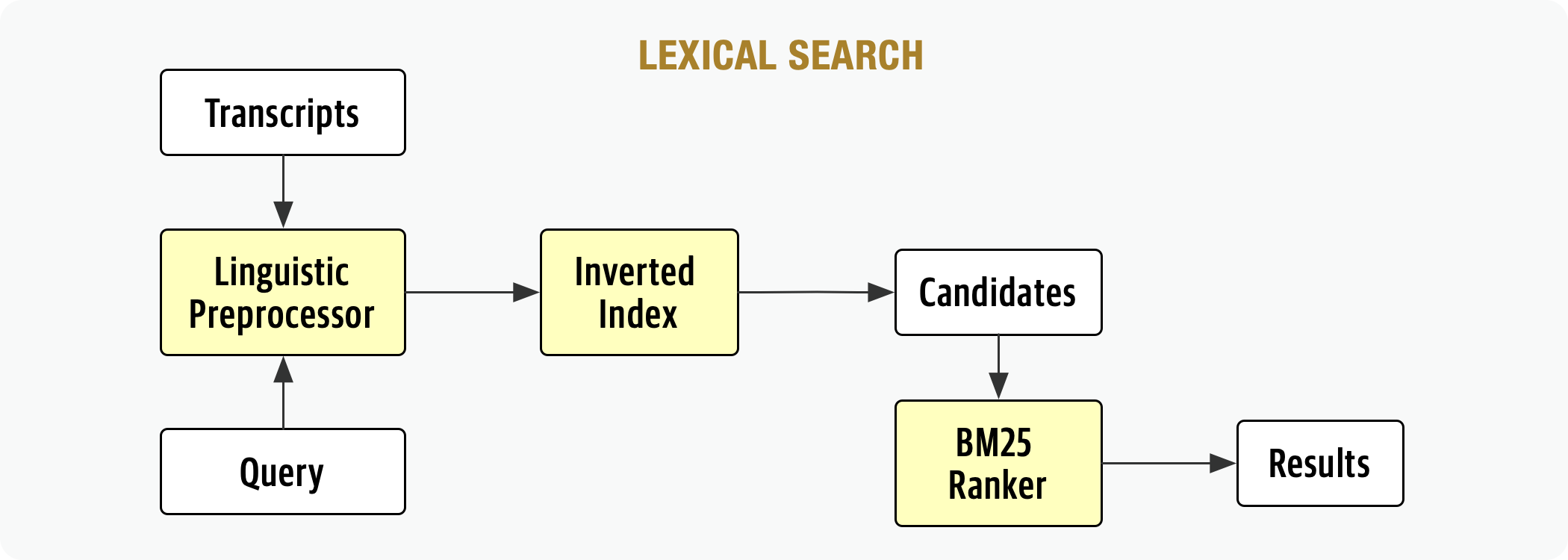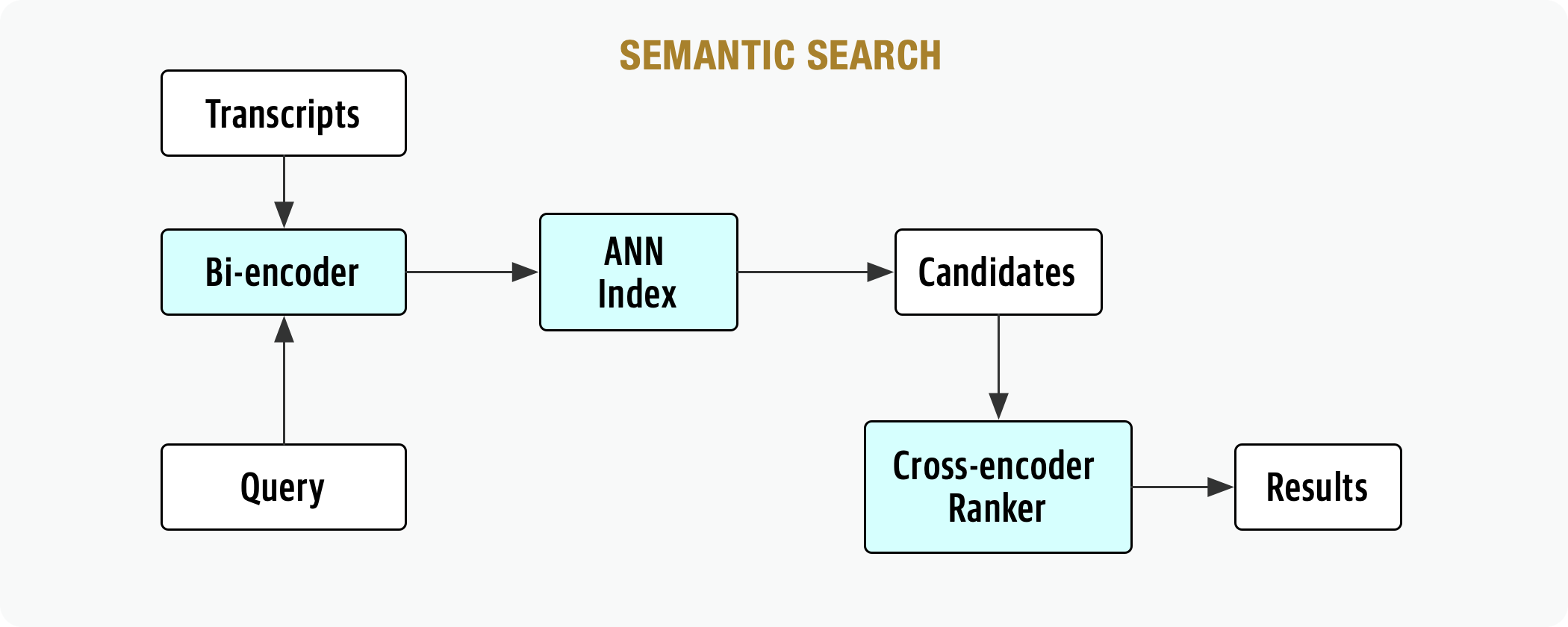Semantic search
In order to support the problematic case where fast.ai students might not know exactly what they're looking for or might not use domain specific keywords, FastSearch implements a semantic search algorithm. A more common approach would have been a lexical search engine, like ElasticSearch, with a predictable process flow like this:

While lexical search works by decomposing queries into tokens, retrieving documents from an inverted index, and ranking candidates using sparse BM25 vectors and cosine similarity, they struggle to represent meaning using only keywords. For example, a user searching textbook titles for “data processing in python” won’t find a textbook entitled Introduction to Pandas, even though "pandas" is very relevant to the query.
FastSearch addresses this limitation by using neural networks to learn dense vector representations in an embeddings space where vectors with similar meanings are closer together. Transformers are well suited to learn this embedding space as their self-attention layers directly learn the interactions between tokens in text.
